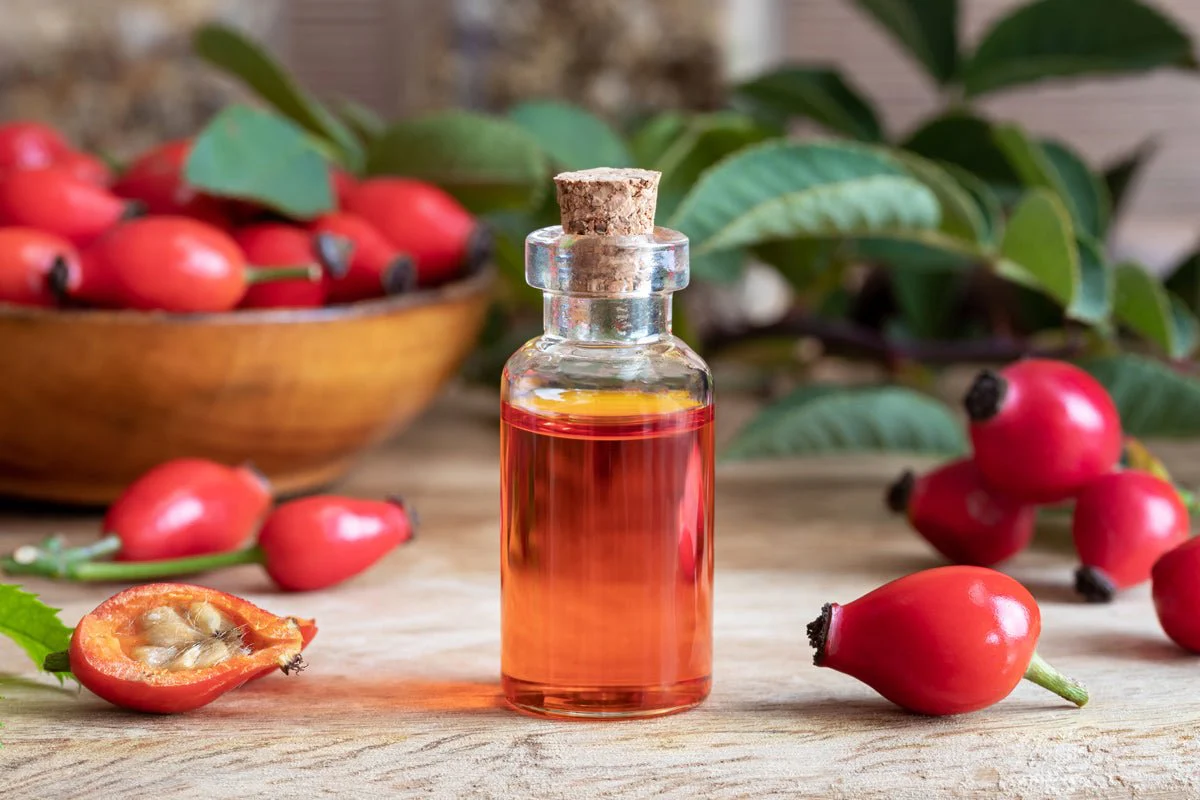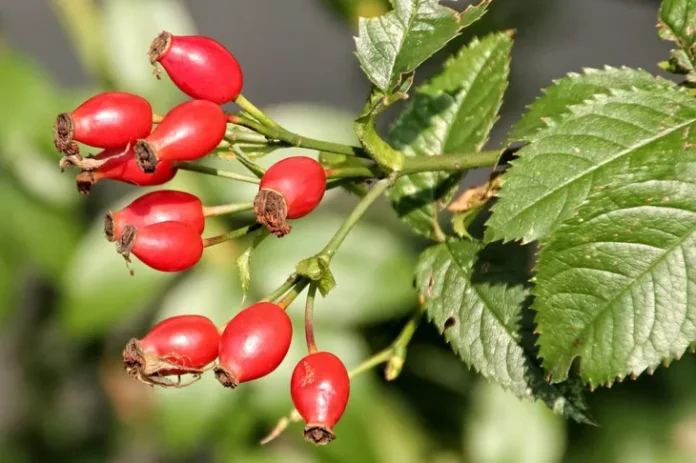It’s no secret that Mother Nature has always been abundant in medicinal plants, which have served as valuable allies in the fight against various ailments. For millennia, people have gratefully used her gifts to restore strength, maintain beauty, and preserve youth. One such gift is the rosehip, which is extremely popular in traditional medicine.
Meanwhile, official medicine has also recognized the plant’s merits in treating humans. When necessary, therapists often prescribe these berries. But what exactly makes rosehip so praised?
Rosehip: Benefits and When to Avoid Its Use
First, let’s understand what rosehip is. Botanically, it’s a perennial shrub that defends itself with sharp thorns. This is why rosehip is sometimes called a wild rose, though its flowers don’t resemble roses at all. The rosehip blooms with small pink, orange, or beige buds. The fruits, small red or orange berries about 1.5 centimeters long, are especially valued. They have a rather tart taste, but their biological composition is rich in beneficial properties.
Rosehip is quite unpretentious and can grow effectively like a weed without much attention from gardeners. It doesn’t require much water or shade, but extreme weather conditions can be destructive for it.
Rosehip berries are rich in microelements, containing thiamine, riboflavin, folic acid, flavonoids, vitamins A, E, and K, tannins, calcium, potassium, magnesium, fluorine, chromium, iron, manganese, zinc, copper, pectin, malic, and citric acid. Additionally, 14% of its composition is vitamin C (about ten times more than in currants).
With the right knowledge of how rosehip affects the body, side effects can be minimized, and its benefits maximized. Centuries of use have proven rosehip’s effectiveness, so traditional recipes can be safely used without fear.
Traditional medicine claims that rosehip can restore male strength. While rosehip alone won’t have a noticeable effect in this area, combined with other classical treatment methods, it can be quite effective and speed up problem resolution. Additionally, rosehip has a positive effect on the heart and blood vessels, which is always beneficial for active men. Rosehip decoctions are recommended for colds, malaise, and general fatigue, but it’s essential to consult a doctor before use.
Rosehip also has healing effects for women. It helps eliminate excess fluid, promotes weight loss, and reduces swelling. Rosehip also helps fight acne and blackheads, stabilizes blood circulation, relieves headaches, and calms the nervous system.
When Not to Use Rosehip
Despite its many benefits, rosehip berries have certain contraindications. They should not be consumed if you have a vitamin C intolerance, high stomach acidity, deep vein thrombosis, a tendency to form blood clots, kidney or urinary tract inflammation, and some other conditions. It’s essential to use biologically active components responsibly.
Rosehip is popular due to its wide range of beneficial properties. Its effects become noticeable either immediately or within two to three days of consumption.
Key Benefits of Rosehip:
- Astringent properties (improves digestion, helps with diarrhea).
- Anti-inflammatory effects, particularly noticeable during colds.
- Pain-relief properties, reducing headaches and joint pain.
- Lowers blood pressure.
- Removes excess fluid, reducing swelling.
- Gargling with rosehip juice eliminates bad breath, heals mouth sores, and treats gum inflammation with its antimicrobial effects.
- Restores immunity after viral infections and improves blood composition.
- Anti-aging effects, improving hair strength and shine, as well as skin condition.
Before using rosehip, it’s essential to understand how to use it. Different parts of the plant are used for various purposes, both in medicine and cosmetology, but the berries are the most popular. They are typically not consumed raw but are made into decoctions and infusions, sometimes with other berries or herbs.
The Most Popular Infusion Recipe:
Take about 300 grams of berries, rinse them with water, place them in a thermos, and pour in boiling water. Close the thermos tightly and leave it for a couple of hours. Once the infusion is ready, it can be filtered or simply poured off without the berries. Consume it throughout the day in small doses.
Decoction Recipe:
The decoction is also made from the berries, but this time they are placed in a pot and covered with one liter of water. Set it on low heat and bring it to a boil. Afterward, let the liquid sit for 40 minutes. The decoction should be taken in small sips throughout the day, adjusting to how you feel.
Some people believe infusions are more beneficial than decoctions, but the goal and existing problems should be considered. In any case, it’s essential to consult a doctor to avoid negative consequences from self-treatment.
Interesting Facts About Rosehip
Rosehip is interesting not only for its medicinal properties but also from a botanical and culinary perspective!
- Over 400 species of rosehip are known today, with 10,000 to 50,000 (!) varieties.
- About 100 types of rosehip grow in Russia, many of which are found nowhere else.
- Rosehip typically lives up to 50 years, but some species can live for centuries, growing into full-fledged trees.
- May rosehip is the most widespread worldwide.
- Dog rose is another name for one of the varieties of rosehip.
- The oldest known rosehip grows near a cathedral in Germany and may be over a thousand years old!
- French rosehip can climb trees like a vine, reaching toward the sun.
- The largest rosehip bush in the world grows in Arizona, USA, covering 740 square meters, and blooms with up to 200,000 flowers in spring.
- Rosehip has a well-developed root system that can extend several meters underground.
- Rosehip flowers close at night or before rain to protect the pollen from dew.
- Some varieties of rosehip have no thorns on their stems.
- Rugosa rosehip spreads by sending seeds into the sea, which can eventually sprout far from the parent plant.
- Rosehip tea was popular in the Caucasus, and rose flowers were once eaten as vegetables. In Slovenia, various beverages, including alcoholic drinks, are made from rosehip.
For our ancestors, ancient Slavs, rosehip symbolized health, youth, beauty, and well-being. In Christianity, rosehip also held significant symbolism. According to one ancient legend, Satan, after being cast out of heaven, tried to return using rosehip’s straight stems as a ladder. However, God transformed the rosehip, curving its branches downward, causing them to snag anything that touched them.
You can buy rosehip berries at pharmacies or purchase seedlings from nurseries to plant in your garden. As noted earlier, this shrub is very unpretentious and doesn’t require close attention. After some time, the bush will bear fruit, replenishing your home pharmacy with “medicines.”
